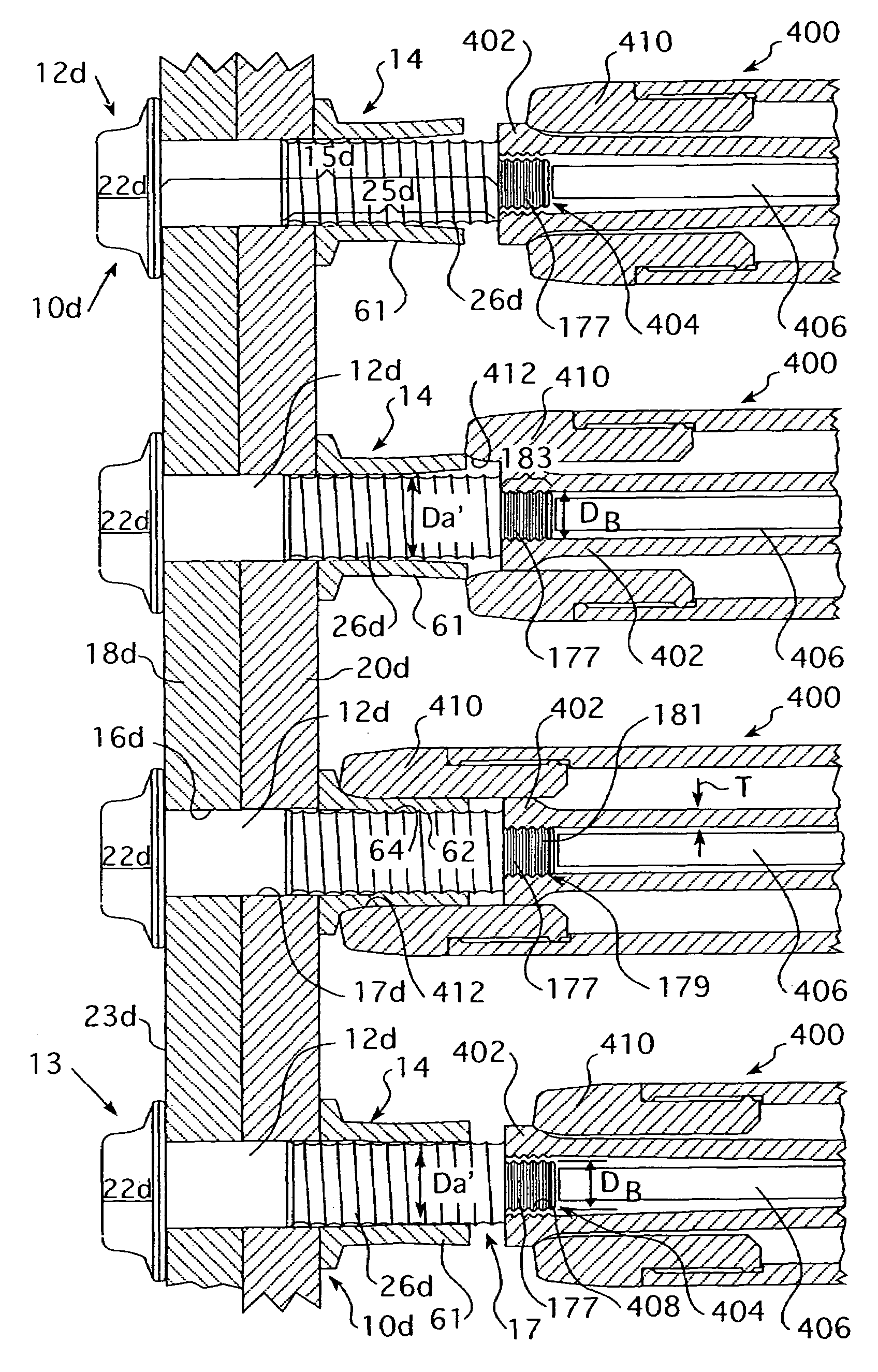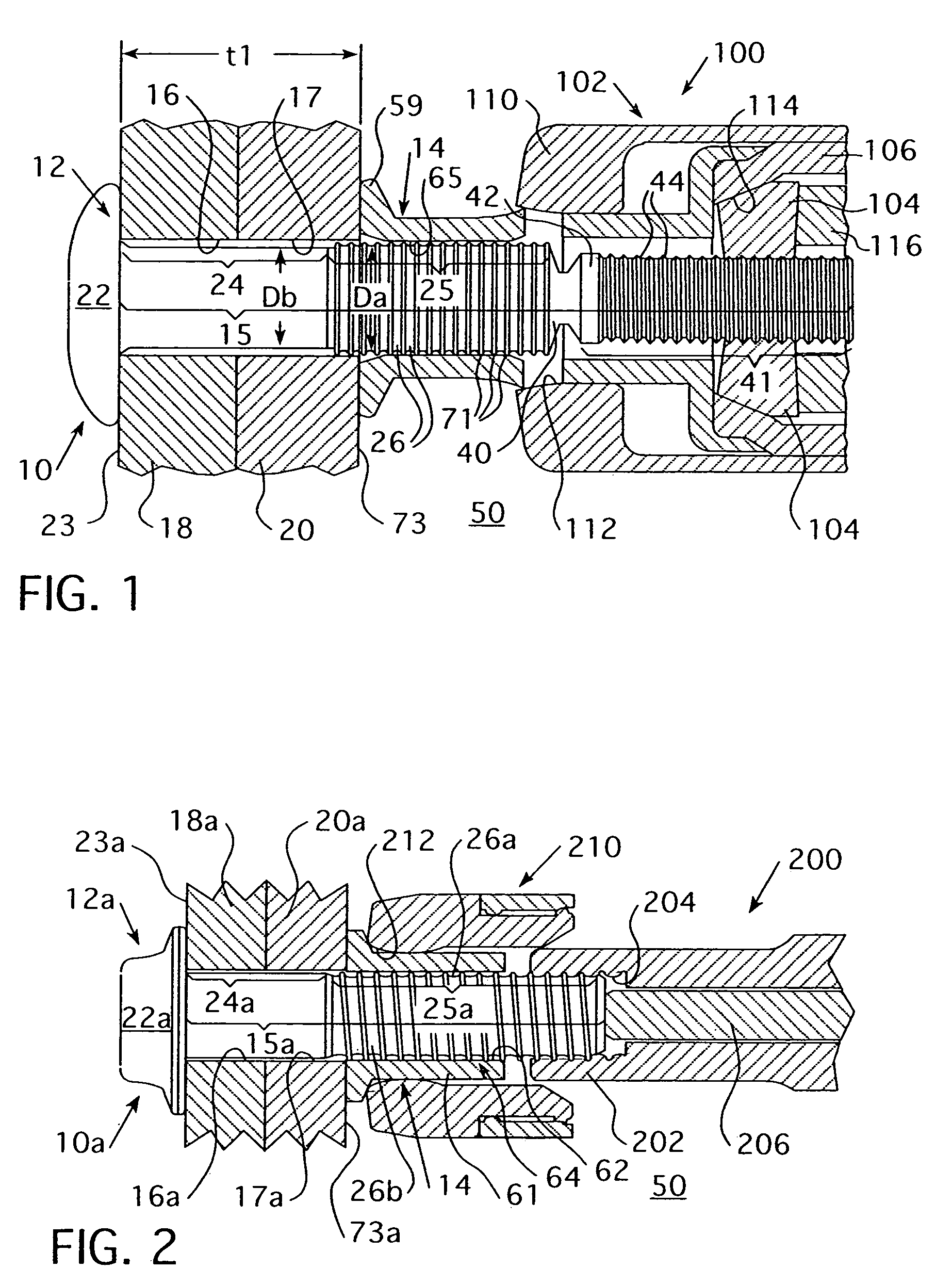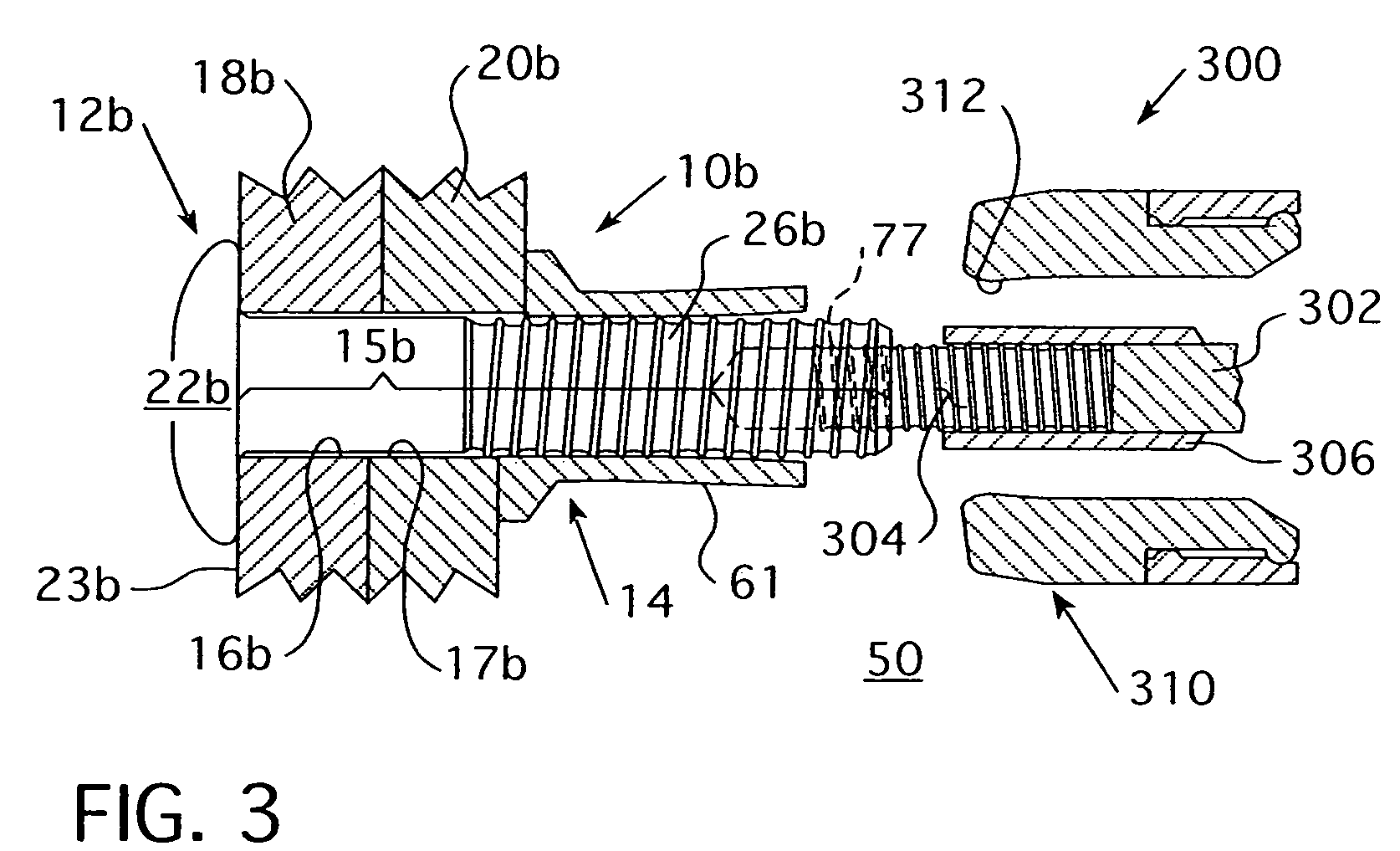Low swage load fastening system and method
a fastening system and low swage technology, applied in the field of fasteners, can solve the problems of premature wear of installation tools, excessive tensile load required in order to fully swage the collar, and high tensile load, and achieve the effect of reducing swage load and high strength
- Summary
- Abstract
- Description
- Claims
- Application Information
AI Technical Summary
Benefits of technology
Problems solved by technology
Method used
Image
Examples
example 1
[0066]The purpose of the first experiment was to determine if collars made to HS5CF-R12 dimensions could be used as-headed to meet Grade 8 values. The HS5CF-R12 fastener is a commercially available Grade 5, swage-type fastener which is manufactured by Huck International, Inc. of Waco, Tex.
[0067]The experiment involved a test of the outer diameter (OD), hardness, swage load, tensile and preload of standard quench and tempered Grade 8 collars which were tested and compared against as-headed Grade 5 collars. The results are quantified in Table 1 herein below.
[0068]
TABLE 1Grade 5 As-Headed CollarCollar DescriptionHS8CF-R12Collar “A”Collar “B”Heat TreatQuench-As-Headed900 F. StressConditionTemperReliefCollar HardnessRb77Rb90Rb89Collar Outside.568″.562″.562″DiameterTensile (Spec:13,070 lbs.12,400 lbs.12,730 lbs.11,600 min.)13%7%10%Percent over spec.Preload (Spec:8,390 lbs.8,040 lbs.7,570 lbs.7,400 min.)13%9%2%Percent over spec.Swage Load5,850 lbs.4,860 lbs.4,800 lbs.Percent decreaseStanda...
example 2
[0073]The second experiment arose out of the desire to develop an economical way to improve installation tool life and to reduce the cost of making Grade 8 collars. Specifically, the goal of the experiment was to determine if thinner-walled, as-headed collars can increase snub load, decrease swage load, and maintain the same tensile and preload as standard quench and tempered collars. Snub load is the load at which the collar 14 first engages the pin lock grooves 26, 26a, 26b, 26c. 26d. After this point, sheet (e.g. workpiece 18, 20; 18a, 20a; 18b, 20b; 18c, 20c) gap pull-out is restricted because the collar 14 is stuck on the pin 12, 12a, 12b 12c, 12d. If a gap remains after snub, clamping is reduced because collar elongation goes into diminishing the gap instead of stretching the pin 12, 12a, 12b, 12c, 12d.
[0074]HSCF-R20 collars from the same work order and raw material (50 KSI tensile) were divided into four groups. HSCF-R20 collars are commercially available collars which are m...
example 3
[0088]Further to the results of the first two experiments, the third experiment further tested the effects of increasing collar hardness while decreasing collar wall thickness, in an attempt to find an optimum balance of high strength and low swage load. Gap pullout results in less than optimum clamp on the joint. However, increasing collar hardness also increases the swage force to install the collar, as evidenced in EXAMPLE 2. Decreasing the wall collar thickness lowers the swage force disproportionately more than the snub (gap pullout) load. Accordingly, combining the discoveries of the foregoing experiments, this experiment was intended to overcome known fastener design limitations by balancing increased collar hardness with a decrease in collar wall thickness in order to maintain the same tensile and preload and increase snub load while decreasing the swage load, thereby improving installation tool life. It was also a goal of the experiment to accomplish the foregoing without m...
PUM
| Property | Measurement | Unit |
|---|---|---|
| time | aaaaa | aaaaa |
| outer diameter Da | aaaaa | aaaaa |
| shear stresses | aaaaa | aaaaa |
Abstract
Description
Claims
Application Information
 Login to View More
Login to View More - R&D
- Intellectual Property
- Life Sciences
- Materials
- Tech Scout
- Unparalleled Data Quality
- Higher Quality Content
- 60% Fewer Hallucinations
Browse by: Latest US Patents, China's latest patents, Technical Efficacy Thesaurus, Application Domain, Technology Topic, Popular Technical Reports.
© 2025 PatSnap. All rights reserved.Legal|Privacy policy|Modern Slavery Act Transparency Statement|Sitemap|About US| Contact US: help@patsnap.com



